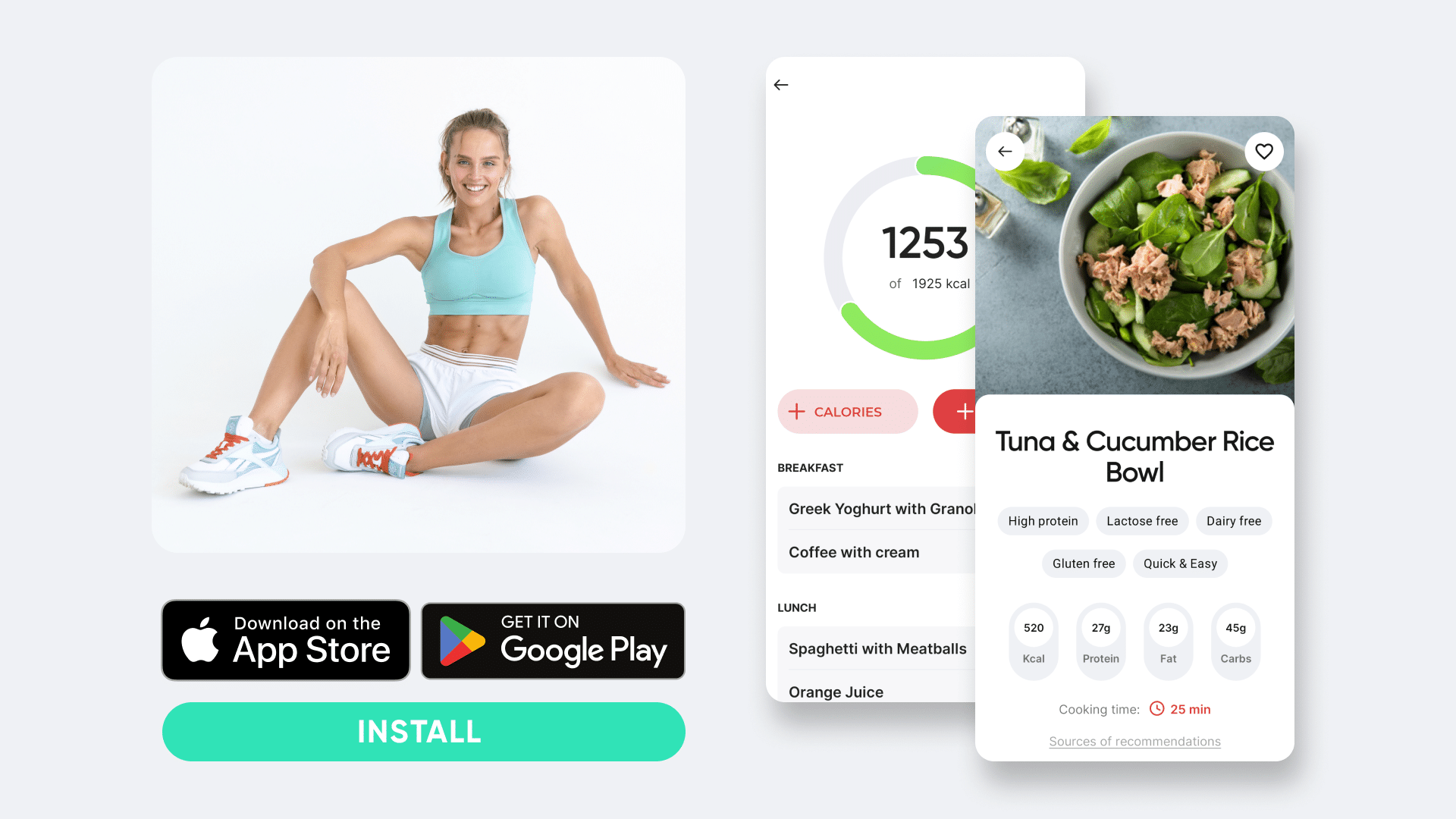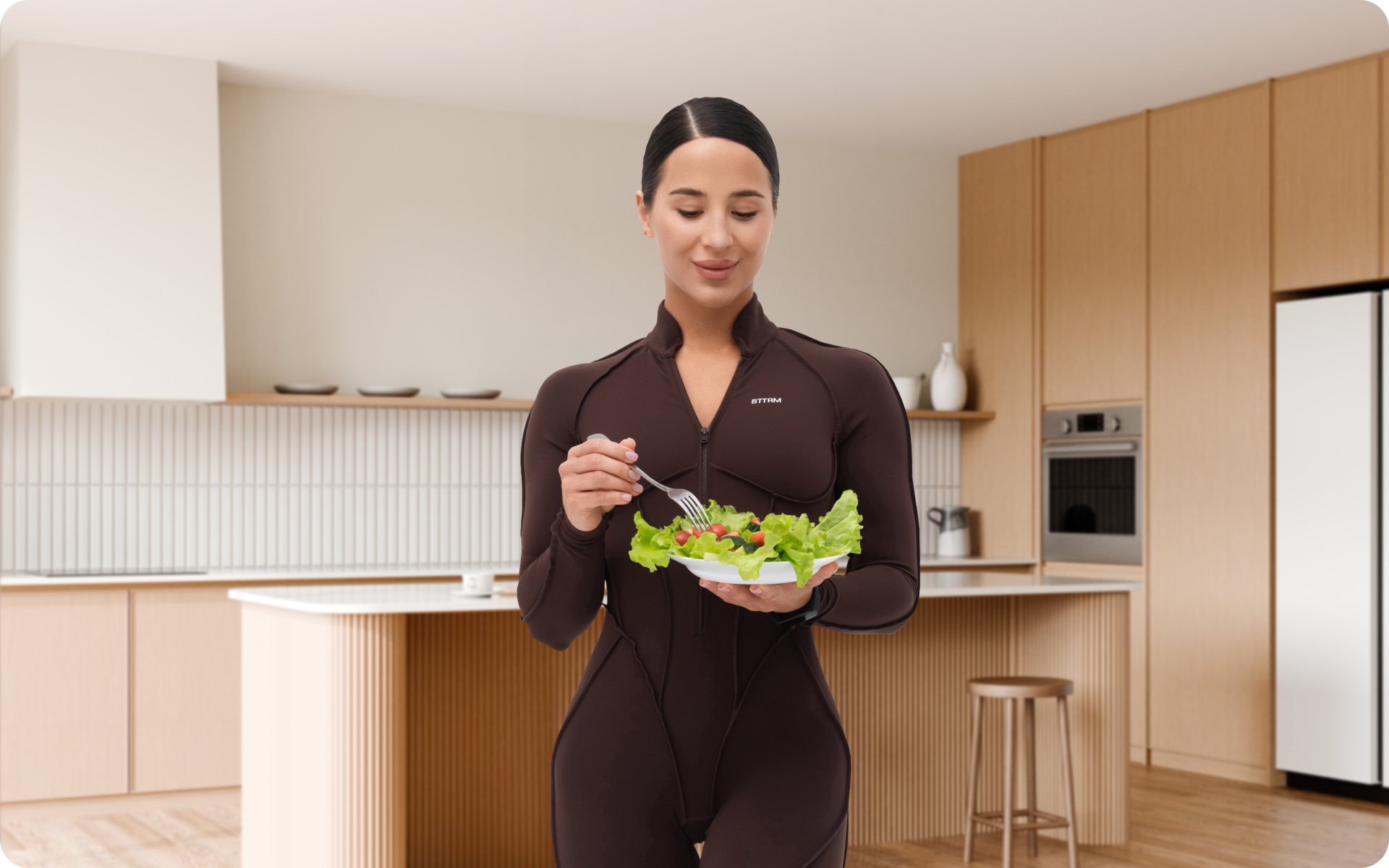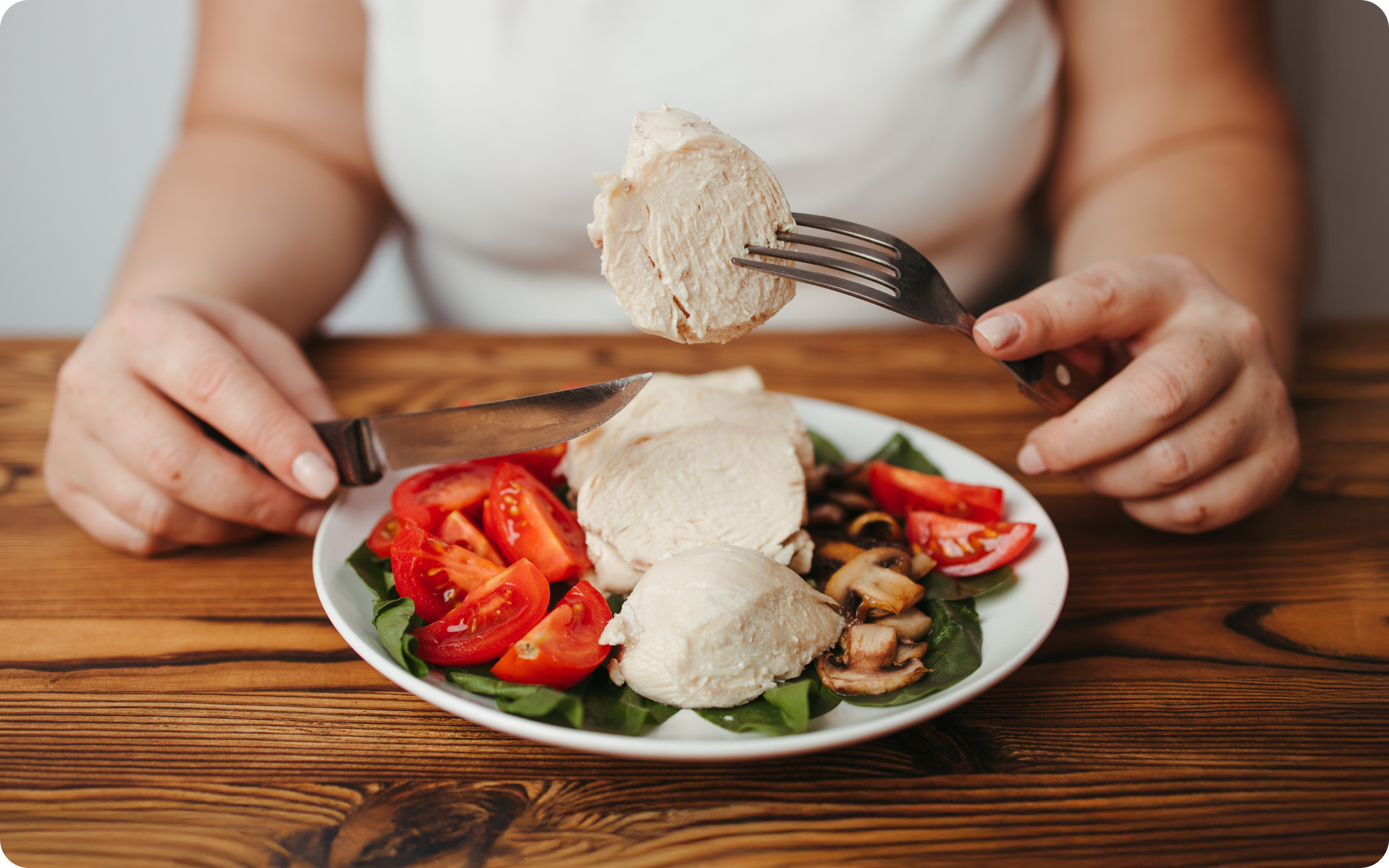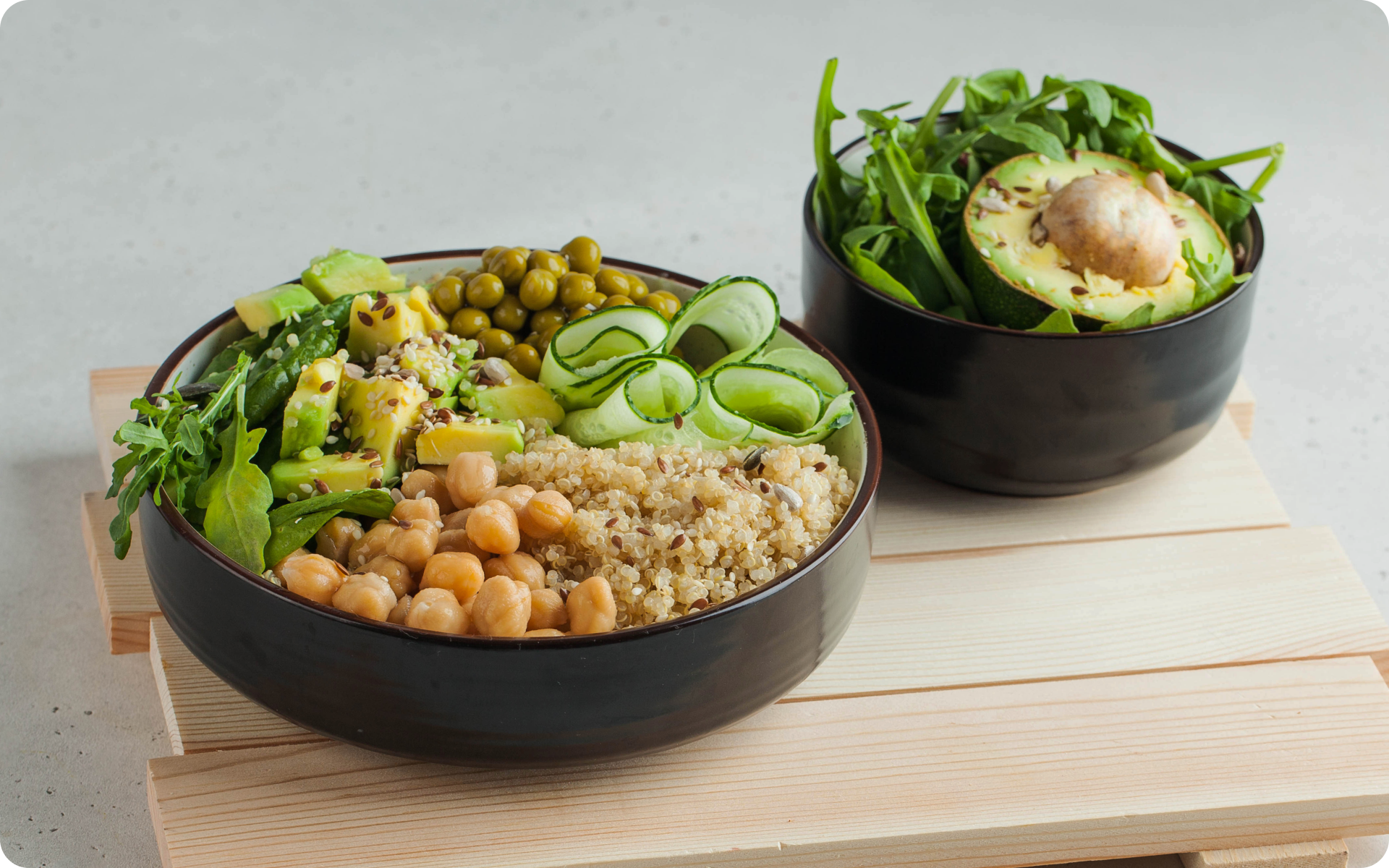Digestive discomfort can be difficult to deal with. You may feel bloated after meals, suffer from frequent gas, or experience severe bouts of diarrhea or constipation. These symptoms can be so disruptive that they significantly impact your quality of life.
What you eat each day can play an important role in how you feel — both physically and emotionally. This is why adjusting your diet can be a powerful step in resolving ongoing digestive issues.
You may have been recommended by a healthcare provider to adopt a low-residue diet, which is designed to reduce the amount and frequency of stool in the digestive tract.
Here’s what you need to know about the reasons behind this approach, the benefits it may offer, and some sample menus to get you started.
Under the guidance of a doctor, this type of diet can be particularly useful for individuals who are facing specific health challenges such as inflammatory bowel disease (IBD), diverticulitis, or those who are preparing for or recovering from certain gastrointestinal surgeries.
What Is a Low-Residue Diet?
A low-residue diet is a temporary low-fiber nutrition plan that is designed to give the digestive system a rest. The term ‘residue’ refers to any solid contents that end up in the large intestine after digestion, including undigested and unabsorbed food (which consists mostly of dietary fiber), bacteria, and gastric secretions (7).
The main purpose of a low-residue eating plan is to decrease the size and frequency of bowel movements in order to relieve painful symptoms. It’s important to limit the consumption of foods that your body can’t digest properly so as not to irritate an inflamed bowel.
A low-fiber diet is not intended for weight loss and should only be followed under your doctor’s supervision. However, although this eating pattern restricts high-fiber foods, it doesn’t mean that you should avoid all foods that contain fiber.
You can include low-fiber foods on your menu, as they should slow your bowel movements and relieve symptoms of diarrhea. It’s recommended to limit fiber intake to approximately 10-15 g per day on a low-residue diet. According to the American Dietetic Association , healthy people should consume about 25 to 38 grams of fiber daily (10).
If you tend to let yourself off the hook, raise the white flag when things get tougher than you expected, send yourself on an unconscious binge-eating trip – BetterMe app is here to help you leave all of these sabotaging habits in the past!
Why Eat a Low–Residue Diet?
Usually, physicians can prescribe this diet before or after certain medical procedures such as a colonoscopy or bowel surgery or in case of tumors or narrowing of the intestine (2).
It may also be suggested for treating symptoms of irritable bowel syndrome, diverticulitis, diarrhea, Crohn’s disease, and ulcerative colitis (8). It’s important to follow this diet precisely when it’s prescribed, as it may cause unpleasant side effects and symptoms if you follow it incorrectly.
Read More: Different Types Of Diets: The Lowdown on the Most Talked-About Weight Loss Strategies
Benefits of a Low–Residue Diet
- Reduce bowel movements by cutting down on foods that are poorly digested
- Reduce the amount of stool your body produces
- Ease abdominal pain, diarrhea, and other symptoms
- Ease the amount of work your digestive system isn’t doing
How to Follow a Low-Residue Diet
If your doctor recommends you follow a low-residue diet, you’ll need to consume fewer vegetables, fruits, legumes, and whole grains.
In some cases, doctors also advise avoiding milk and dairy products. Although milk doesn’t contain fiber, it may cause discomfort, abdominal cramping, or diarrhea for some people (5).
However, your physician or registered dietitian may prescribe you a diet that includes more or less restrictions, depending on your medical condition and tolerance.
List of Non-Compliant Foods You Should Avoid on a Low-Residue Diet
- Brown rice, wild rice, and other whole grains (oats, kasha, barley, quinoa)
- Whole-wheat or whole-grain bread, cereals, and pasta
- Raw fruit and berries
- Dried fruits and prune juice
- Raw or undercooked vegetables
- Dried beans, peas, and lentils
- Seeds, nuts, crunchy peanut butter, or nut butter
- Chocolate
- Caffeine
- Broccoli, cauliflower, Brussels sprouts, cabbage, kale
- Coconut
- Popcorn
What Products Can You Find on the Low–Residue Diet Food List?
The complete list of foods that are allowed on this nutrition plan can vary from person to person and should be checked and compiled by your doctor. Here are products that are generally allowed when on a low-fiber diet:
- White bread with no nuts or seeds
- White rice, plain white pasta, and crackers
- Refined hot cereals and cold cereals with less than 1 gram of fiber per serving
- Pancakes or waffles made from white refined flour
- Most canned or well-cooked vegetables without skin or seeds (e.g., beets, beans, carrots, cucumber, eggplant, mushrooms)
- Fruit without peels or seeds and certain canned or well-cooked fruit (e.g., peeled baked apples, seedless peeled grapes, ripe banana, cantaloupe)
- Raw and ripe bananas, melon, cantaloupe, watermelon, plums, peaches, and apricots
- Raw lettuce, cucumbers, zucchini, and onion: a thin slice on a sandwich is okay, but not a big salad
- Cooked spinach, pumpkin, seedless yellow squash, carrots, eggplant, potatoes, and green and wax beans
- Tender meat, poultry, fish, tofu
- Milk and dairy products (yogurt, pudding, ice cream, cheeses, sour cream) — if tolerated
- Butter, margarine, oils, and salad dressings without seeds
- Eggs
Safe Beverages
- Decaffeinated coffee (caffeine can upset your stomach), tea, and carbonated beverages
- Milk (if tolerated)
- Pulp-free fruit juice
- Fruit-flavored drinks and flavored waters
- Strained vegetable juices
Check out our blog Mint Water for a healthy hydration alternative to soda and sports drinks.
Make sure to be vigilant and read food labels carefully when buying or eating any product. It’s in your best interest to avoid foods containing more than 1 gram of fiber per serving. Most food labels include information about the amount of fiber that’s in the product.
If you find it challenging to digest certain foods, make an effort to completely scrap them from your diet. Go easy on alcohol, spicy foods, and coffee as they may irritate your digestive system (1) (3) (4) (6).
A point that is often overlooked is that it’s better to avoid dry cooking methods such as roasting, broiling, or grilling while following this diet. These are the recommended cooking methods on this nutrition plan:
- Braising
- Steaming
- Poaching
- Simmering
- Microwaving
If you struggle to give up your favorite foods or work out till your legs give way, the BetterMe app is here to breathe a fresh perspective on the way you view the weight loss process! Check out the app and experience the fun side of fitness and dieting with BetterMe!
Low–Residue Diet Menu Sample
- Decaffeinated coffee (with cream and sugar, if desired)
- A cup of pulp-free juice (orange, apple, or cranberry juice)
- Farina
- Scrambled eggs
- Waffles, French toast, or pancakes
- White-bread toast with margarine and grape jelly (no seeds)
Lunch
- Baked chicken, white rice, canned carrots, or green beans
- Salad with baked chicken, American cheese, smooth salad dressing, a white dinner roll
- Baked potato (no skin) with sour cream and butter or margarine
- Hamburger with white seedless bun, ketchup, and mayonnaise (you can add a piece of lettuce if it doesn’t make your symptoms worse)
Dinner
- Tender roast beef, white rice, cooked carrots or spinach, white dinner roll with margarine or butter
- Pasta with butter or olive oil, French bread, fruit cocktail
- Baked chicken, white rice or baked potato without skin, and cooked green beans
- Broiled fish, white rice, and canned green beans
BetterMe app is a foolproof way to go from zero to a weight loss hero in a safe and sustainable way! What are you waiting for? Start transforming your body now!
Result
Incorporating a low-fiber eating pattern into your lifestyle should help relieve symptoms of diarrhea, abdominal pain, cramping, bloating, gas formation, infection, or inflammation. However, make sure you stick to this diet for as long as your doctor prescribes as it may not provide your body with all the essential nutrients in the long term and may result in nutrient deficiency.
In addition, your doctor may advise you to add a multivitamin or other supplements to your diet such as calcium, potassium, folic acid, and vitamin C to be on the safe side and make sure you’re not skimping on any nutrients your body needs.
Once you bounce back to your regular diet, it’s in your best interest to phase fiber in gradually over an extended period of time to prevent any side effects and so your digestive health isn’t jeopardized.
Our previous blog – No-Sugar Diet – highlights the benefits of a sugar-free lifestyle and healthier sweetener alternatives.
FAQs
What’s the difference between a low-residue diet and a low-fiber diet?
They’re incredibly similar, but a low-residue diet sometimes includes limiting the consumption of dairy products, caffeine, and alcohol, to avoid irritation. The two terms are sometimes used interchangeably. The bottom line is that you’ll give your gastrointestinal tract a much-needed break.
Is rice okay on a low-residue diet?
White rice is highly digestible and relatively easy on the digestive tract. It contains minimal amounts of fiber, which reduces stool bulk and frequency.
However, not all types of rice are suitable for a low-residue diet. For example, brown rice contains higher amounts of fiber than white rice (9) and may not be recommended for individuals with digestive issues. Other types of rice, such as wild or black rice, may also be higher in fiber and not suitable for a low-residue diet.
What protein can you eat on a low-residue diet?
Skinless chicken or turkey, fish, tofu, and eggs are all excellent protein sources that are easy to digest and low in residue.
Avoid tough red meats or fatty meats; they may cause discomfort for individuals with digestive issues. It’s also important to avoid processed meats such as deli meat or sausage, which can be difficult for the digestive system to break down.
Plant-based proteins such as dried beans, peas, and lentils are off-limits on a low-residue diet due to their high fiber content. However, tofu and other soy-based proteins can be consumed in moderation.
What cereal can I eat on a low-residue diet?
Cereals with less than 1 gram of fiber per serving are generally considered to be safe for a low-residue diet. These include refined or puffed cereals such as cornflakes, rice crisps, or cream of wheat.
Avoid whole-grain or bran-based cereals as they can be high in fiber and can cause digestive discomfort. Some cereals may also contain nuts or seeds, which should be avoided on a low-residue diet.
Find out which fruits are better eaten in moderation in our previous blog – Starchy Fruits
The Bottom Line
A low-residue diet can be an effective way to alleviate digestive symptoms and improve the overall quality of life for certain people. By avoiding high-fiber foods and focusing on easy-to-digest options, individuals may experience relief from conditions such as IBD or diverticulitis.
However, it’s important to consult a doctor before you make significant changes to your diet. They can help tailor a low-residue diet to your specific needs and ensure you still receive adequate nutrients.
DISCLAIMER:
This article is intended for general informational purposes only and does not serve to address individual circumstances. It is not a substitute for professional advice or help and should not be relied on for making any kind of decision-making. Any action taken as a direct or indirect result of the information in this article is entirely at your own risk and is your sole responsibility.
BetterMe, its content staff, and its medical advisors accept no responsibility for inaccuracies, errors, misstatements, inconsistencies, or omissions and specifically disclaim any liability, loss or risk, personal, professional or otherwise, which may be incurred as a consequence, directly or indirectly, of the use and/or application of any content.
You should always seek the advice of your physician or other qualified health provider with any questions you may have regarding a medical condition or your specific situation. Never disregard professional medical advice or delay seeking it because of BetterMe content. If you suspect or think you may have a medical emergency, call your doctor.
SOURCES:
- Alcohol’s Impact on the Gut and Liver (2021, ncbi.nlm.nih.gov)
- Are Low-Residue Diets Still Applicable? – Journal of the Academy of Nutrition and Dietetics (2012, jandonline.org)
- Capsaicin, the Spicy Ingredient of Chili Peppers: Effects on Gastrointestinal Tract and Composition of Gut Microbiota at Various Dosages (2023, ncbi.nlm.nih.gov)
- Consumption of spicy foods and the prevalence of irritable bowel syndrome (2013, ncbi.nlm.nih.gov)
- Diet and nutritional factors in inflammatory bowel diseases. (2016, ncbi.nlm.nih.gov)
- Effects of Coffee on the Gastro-Intestinal Tract: A Narrative Review and Literature Update (2022, ncbi.nlm.nih.gov)
- Evidence for Low Residue Diet in the Management of Gastrointestinal Related Conditions. (2012, journals.sagepub.com)
- Low-Residue and Low-Fiber Diets in Gastrointestinal Disease Management (2015, sciencedirect.com)
- Phytochemical Profile of Brown Rice and Its Nutrigenomic Implications (2018, ncbi.nlm.nih.gov)
- Position of the American Dietetic Association: health implications of dietary fiber. (2008, ncbi.nlm.nih.gov)









